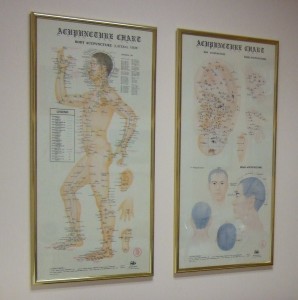What is Acupuncture?
Acupuncture is a time-honored medical treatment, dating back about 3,000 years in China. It is based on a theory that health depends upon the delicate balance and the normal flow of the Qi (chi, meaning “energy” or “life force”). Disturbance or blockage of the flow of the Qi along invisible pathways or meridians (channels) results in illness or pain. By inserting a few hair-thin solid disposable needles into acupuncture points at various often seemingly unrelated locations, acupuncturist seeks to restored that balance and to remove the blockage, thereby restoring health.
When a needle in inserted to the tissue, our body thinks it is under attack and therefore, mobilize more blood rushing to that point. Since each needle attracts blood to itself, the placement of the needle would allow an acupuncturist to preferentially increase or decrease the blood flow to different part of the body much like adjusting a sprinkler value to increase or decrease water flow in different part of a garden. In a beautiful garden, there is a balanced water flow. In a health body, there is a balanced energy and blood flow.
Is It Painful? Contrary to what they might expect, most people find acupuncture treatment relaxing; some even fall asleep! Most of the acupuncture points are located on the trunk and head where the insertion of a hair-thin acupuncture “pin” may feel like a mosquito bite. Our hands and feet are most sensitive to acupuncture due to the high density of the nerves in those areas.
How Does Acupuncture Work for Pain? Intensive research has been carried out in medical communities both inside and outside China to see how it works on the biochemical level. Scientists have observed that stimulation of acupuncture points can cause changes in the distant parts of the body. Current research suggests that acupuncture mobilizes the body’s own defenses against pain. It has been shown that acupuncture increases the production of natural, morphine-like chemicals, called endorphins. Stimulation of acupuncture points may also trigger certain areas of the brain and the spinal cord, blocking incoming pain signals from the peripheral nerves.
